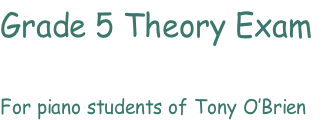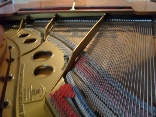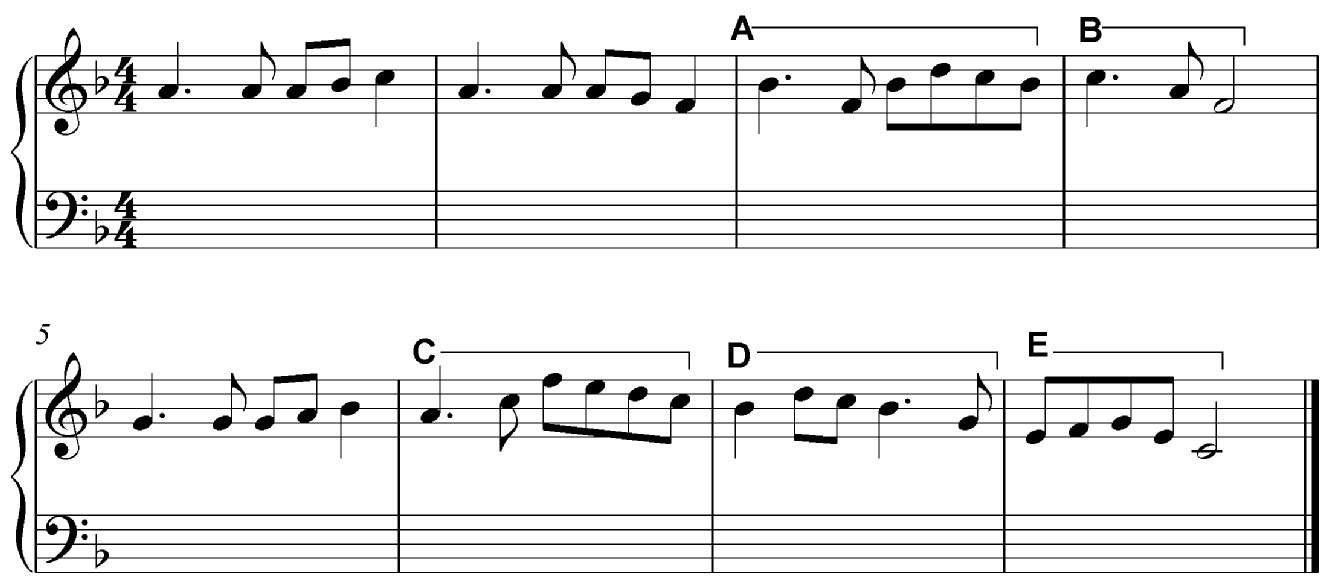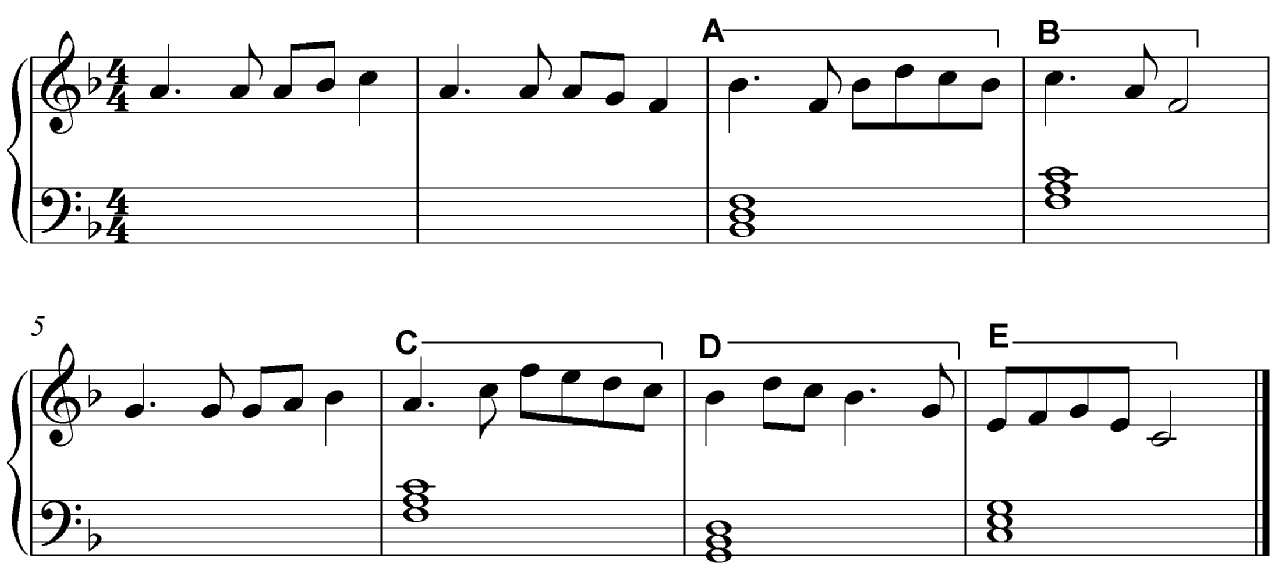


7
Identifying cadences -
The extract will always be presented in this way as a single line melody in the treble staff, and a blank bass staff where you can write the chord notes if you wish.
Take note of the “ONLY ONE chord” at each of the lettered positions and the indication that there a only two cadences. (It’s almost guaranteed that there will be two cadences, typically one with a 2 chord sequence and the other a 3 chord sequence.)

1
Work out the scale/key of the extract. The key signature of one flat and the absence
of accidentals suggests the key is F major. Bring to mind/ write down the I,II,IV
and V chords as I = F-

2
Now look at the melody notes at each bracketed chord position. At each chord point,
the melody will consist of either important chord notes -
So looking at the chord position A, the melody notes are a long Bb, a leap to a F followed by a leap back to Bb, a skip up to D, a step down to a quaver C note and then further step down to Bb.
There’s no simple triad chord containing all the melody notes Bb-
The second chord B completes the first cadence and consists of F-
(If you had thought the extract was in D minor, you would have come to the same conclusions
about the chords of Bb-
Chord C -
Chord D -
Chord E -


3
Finally double-
The first cadence ends with chord I and is preceded by chord IV -
The second cadence ends with chord V -
Check all your chords are I,II, IV and V only. You cannot give a chord “a”, “b” or “c” position so DON’T when you write down the chords.
FIRST CADENCE:
Chord A .IV.......................................
Chord B I.......................................
SECOND CADENCE:
Chord C I.......................................
Chord D II......................................
Chord E V
.......................................
Alternatively, you can write the chords in root position into the bass clef staff.
